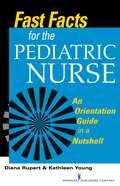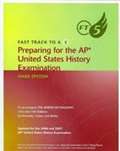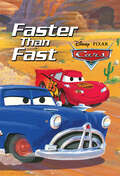- Table View
- List View
Fart Squad #4: The Toilet Vortex
by Stephen Gilpin Seamus PilgerIt's the fourth adventure from the belly-bloating, plunger-toting, pants-exploding . . . fearless FART SQUAD! This laugh-out-loud chapter book series is perfect for Captain Underpants fans. With black-and-white illustrations throughout and a butt-load of bathroom humor, young readers will be giggling from start to finish.Something is rotten in the plumbing of Harry Buttz Elementary School, and it's kidnapped Janitor Stan!It's up to the Fart Squad to dive into the toilet vortex to save their scent-sei from the World of the Royal Flush. Grab a match, because this stink just got real. Only the Fart Squad has the guts, the gall, and the gas to flush this round brown mound before he overflows his toilet kingdom on the world.
Fart Squad #5: Underpantsed!
by Stephen Gilpin Seamus PilgerIt's the fifth adventure from the crack of the crop, the bum de la bum, the stink of the litter . . . the fearless FART SQUAD! This laugh-out-loud chapter book series is perfect for Captain Underpants fans. With black-and-white illustrations throughout and a butt load of bathroom humor, young readers will be giggling from start to finish.Underwear is disappearing all over Buttzville, and it's up to the Fart Squad to sniff out the villain who's brought the city to a chafing halt.But the heroes better hold on to their tighty-whities. Doctor Lucius René Bottom is out to pants the city that yanked his underwear business out from beneath him--and take the Fart Squad down, too. Get ready to go commando like no kid has gone before, because the Fart Squad is filling with fuel, gaining gas, and getting ready to kick some Bottom with the foulest fart attack in the history of Buttzville!
Fart Squad #6: Blast from the Past
by Stephen Gilpin Seamus PilgerIt’s the sixth adventure from the crack of the crop, the wild at fart, the first in gas, the fart-astic four . . . the fearless FART SQUAD! Here ye, here ye, good sirs and ladies! The magnificent Fart Squad has arrived to pull ye olde Golden Scratcher from a stone as tough as buns of steel.The Fart Squad must travel back in time to rescue the Golden Scratcher before Harry Buttz can get his hands on it—and leave the world in an itchy mess. Can the heroes of Buttzville cut the cheese on his stinky plan and save history? This laugh-out-loud chapter book series is perfect for Captain Underpants fans. With black-and-white illustrations throughout and a butt-load of kid-perfect humor, young readers will be giggling from start to finish.
Fart Squad (Fart Squad #1)
by Stephen Gilpin Seamus PilgerIt was an average day at Harry Buttz Elementary until . . . KABLAM! The five-bean burritos churning in Darren Stonkadopolis's stomach exploded in a fart so volcanic it melted his desk seat, knocked out his whole class, and got him sent to the nurse--and he's not alone.Something fishy is going on in Buttzville. And it's up to Darren and his three farting friends to combine their potty powers to get to the bottom of this evil plot--before it's too late. With their scent-sei, Janitor Stan, at their side, the Fart Squad has to learn to harness the powers between their butt cheeks. And then let it RIIIP."A flagrant romp. Not to be passed!"--The New York Toots"A cut above the rest."--StinkyCheese.com"If you haven't caught wind of Fart Squad yet, don't let this one go!" --Rude News"We've been dealt a winner!"--SmeltIt.blog.com
Farther and Faster
by Tara Funk Katherine ScraperHow did people go places long ago? How do people go places now?
Fascinating Animal Facts (Fountas & Pinnell Classroom, Guided Reading Grade 1)
by Nico AtwaterNIMAC-sourced textbook
Fashion Business Cases: A Student Guide To Learning With Case Studies
by Leslie Davis BurnsFashion Business Cases: A Student Guide to Learning with Case Studies allows students to apply what they are learning in the classroom to real-life situations in the global fashion industry. Adapted from the Bloomsbury Fashion Business Cases (BFBC) online resource, this text will aid instructors in providing high-quality examples from scholars around the world. A mix of introductory, intermediate, and advanced cases ensure that students of all levels can develop the business, communication, and problem-solving skills required of fashion industry professionals. Topics range from corporate social responsibility and sustainable fashion to transparent brand communication and cultural sensitivity. This book is designed to foster critical and ethical thinking as students enter the fashion industry. Key Features: - 40 cases studies, of introductory, intermediate, and advanced level - Learning Objectives and Business Questions included with each case - An introductory chapter teaching students how to use case studies effectively
Fashion Forecasting
by Evelyn L. BrannonAn all-new textbook for fashion professionals interested in improving forecasting abilities. This unique book combines the theories of fashion changes with the process of organizing and analyzing the information and synthesizing the data into actionable forecasts. It integrates traditional and electronic approaches to the process of forecasting at each stage of research, organization, analysis, interpretation, and presentation. By observing forecasting practices throughout the textile and apparel industry, Brannon looks at the complete process, including how forecasters sort hype from directional signals, at short-term tactical decisions and long-term strategic planning, and at the executive information systems for presenting and implementing the forecast. Recognizing that students are executives in training, the author provides the reader with the opportunity to rehearse these practices through case studies and forecasting activities.
Fashion Kitty (Fashion Kitty)
by Charise Mericle HarperAfter a stack of fashion magazines falls on Kiki Kitty's head while she is blowing out the candles on her birthday cake, Kiki turns into Fashion Kitty, a feline superhero who saves other kitties from fashion disaster.
Fashion Kitty and the Unlikely Hero (Fashion Kitty)
by Charise Mericle HarperFashion Kitty is experiencing a bit of a slump. Lately, there haven't been as many fashion emergencies to solve. But when the principal of her school makes a new rule that everyone has to wear boring school unforms, Fashion Kitty will finally be able to put her fashion talents to use. But what if some kitties don't want her help?
Fashion Kitty versus the Fashion Queen (Fashion Kitty)
by Charise Mericle HarperAfter her last adventure, Fashion Kitty is truly becoming a hero. At school, she is more popular than ever. She's even been mentioned in several articles in the local newspaper, (which she clips out and saves in a scrapbook, of course). But not everyone is excited about Fashion Kitty's newfound popularity. A spoiled new kitty named Cassandra doesn't like sharing the spotlight. And when Fashion Kitty starts inspiring the other kitties at school to be more independent about their style choices, Cassandra really doesn't like it.
Fashion Marketing & Merchandising
by Mary G. WolfeFashion Marketing & Merchandising motivates students to examine the business aspects of the fashion world and the career opportunities it offers. Students learn about the entire textile/apparel/retail soft goods chain, its economic fundamentals, and strategies for retail success. The text Describes new retail trends, including showrooming and omni-channel retailing with the latest Internet, mobile, and social media strategies. Reports the latest advances in textiles, manufacturing, mass customization, and niche specialization. Discusses the greater emphasis on ethics, social responsibility, environmental sustainability, and data security. Reports successful fashion merchandising activities that satisfy the changing consumer market. Explains computer technologies such as robotic manufacturing, automatic merchandise replenishment, radio frequency identification (RFID), and Internet retailing. Examines fashion industry globalization and business consolidation. Discusses how to prepare for career opportunities in fashion, including entrepreneurship. Identifies industry trade groups and publications that help students gain added knowledge now and contacts in their professional careers.
Fashion Marketing: Designers Style
by Gigi Ekstrom Margaret JustissGlencoe Marketing Series: Fashion Marketing focuses on fashion marketing, management, and merchandising. Developed to meet state standards and objectives, the Glencoe Marketing Series books have been developed for secondary students taking Marketing II courses. Designed as stand-alone, semester-length texts, books in the Glencoe Marketing Series also function as supplemental texts for Marketing I courses that may use Glencoe Marketing Essentials.
Fashion!
by Mary C. WolfeDesigned for non-laboratory textile and clothing courses, this text covers all aspects of the fashion scene.
Fashion!
by Mary G. WolfeFashion! gives your students an in-depth look at the exciting world of the fashion scene. This colorful text is designed for nonlaboratory textile and clothing courses. Fashion! includes hundreds of images to illustrate concepts and enhance learning. Fashion! can help your students become future employees in fashion-related businesses by helping them: * Understand the apparel industry and learn the skills needed to become more attuned to consumer concerns. * Explore globalization and trends for textile companies, apparel manufacturers, retailers, and consumers, including industry-wide collaboration, multichannel retailing, and cross-channel shopping. * Analyze how Internet technology is changing fashion firms' product development, promotion, and selling through electronics (e-commerce) and how mobile applications and social media affect consumer comparison shopping and buying practices (m-commerce). * Weigh the dilemma of imports, environmental sustainability, and ethical and social issues about companies when buying their goods. * Discuss how to deter, detect, and defend against identity theft. * Describe fashion design techniques. * Gain exposure to the career clusters and the many career opportunities in the apparel industry.
Fast Facts for the Pediatric Nurse: An Orientation Guide in a Nutshell
by Diana L. Rupert Kathleen YoungThis new addition to the Fast Facts series delivers the core information for orienting novice nurses or nursing students to the challenging field of pediatric nursing. Pocket-sized and formatted for quick access to the knowledge a pediatric nurse needs daily, it is packed with concise information on both disease processes and well child care, and offers the clinical advice that comes from years of experience. A particularly helpful feature is the book's cross-referenced index of frequently used terminology that helps users rapidly access crucial information. Importantly, the guide offers valuable suggestions for how to best communicate and work with children using age-appropriate techniques. Seasoned pediatric nurses describe how to assist compassionately and efficiently with painful procedures that can be emotionally taxing for all involved. They share proven and time-tested tips for easing trauma for both child and parent. Each chapter features an introduction and key chapter objectives, followed by short paragraphs and bulleted information organized according to body systems. It focuses on the most commonly seen illnesses within each system and includes, for each diagnosis, an easy-to-understand description, disease manifestations, diagnostic criteria, and interventions. "Fast Facts in a Nutshell" boxes provide highlighted, critical information and key clinical pearls that can be put to work immediately. Key Features: Provides current, evidence based information for new pediatric nurses in a concise, easy-to-access bulleted format Packed with information about commonly seen disease processes and well child care along with sound clinical advice Includes age-appropriate techniques for working specifically with children Presents a cross-referenced index of frequently used terminology for quick information retrieval Highlights important information in call-out boxes that also include clinical pearls
Fast Kart, Slow Kart (Disney Wreck-it Ralph)
by Disney PressDisney's Wreck-It Ralph is a computer-animated feature film about a video game villain who wants nothing more than to be the good guy for a change. But when Ralph finally gets his chance, he discovers that being the hero isn't as easy as it looks. Soon the entire video game world is at stake, and if Ralph doesn't play to win, it could mean "Game Over" for every game in the arcade! This Step 1 reader based on the film is perfect for kids ages 4-6. Plus it comes with over 30 stickers!
Fast Multipole Boundary Element Method
by Yijun LiuThe fast multipole method is one of the most important algorithms in computing developed in the 20th century. Along with the fast multipole method, the boundary element method (BEM) has also emerged, as a powerful method for modeling large-scale problems. BEM models with millions of unknowns on the boundary can now be solved on desktop computers using the fast multipole BEM. This is the first book on the fast multipole BEM, which brings together the classical theories in BEM formulations and the recent development of the fast multipole method. Two- and three-dimensional potential, elastostatic, Stokes flow, and acoustic wave problems are covered, supplemented with exercise problems and computer source codes. Applications in modeling nanocomposite materials, bio-materials, fuel cells, acoustic waves, and image-based simulations are demonstrated to show the potential of the fast multipole BEM. This book will help students, researchers, and engineers to learn the BEM and fast multipole method from a single source.
Fast Track to A 5: Preparing for the AP United States History Examination
by Mark EpsteinA preparation guide for students taking the AP United States history examination with an introductory strategy section, diagnostic test, and document-based questions for practice.
Fast Track to a 5: Institutions and Policies, 12th and 13th Editions
by Karen K. Waples David G. BensonNIMAC-sourced textbook
Fast as the Wind
by John J. PikulskiAn English textbook having a collection of works on various themes such as suspense, fiction, non-fiction, traditional tales etc.
Fast-Forward to the Future!: A Branches Book (Time Jumpers)
by Wendy MassThe Time Jumpers are heading to the future in the third book in this action-packed series from New York Times bestselling author Wendy Mass!Pick a book. Grow a Reader!This series is part of Scholastic's early chapter book line, Branches, aimed at newly independent readers. With easy-to-read text, high-interest content, fast-paced plots, and illustrations on every page, these books will boost reading confidence and stamina. Branches books help readers grow!Chase and Ava are ready for their next adventure! When they touch a glowing cube in their magic suitcase, they jump forward in time! In the future, they find awesome flying cars and tons of robots. But they don't have much time to explore . . . bad guy Randall is after them! Chase and Ava need to act fast to put the cube back where it belongs. Will they complete their mission . . . or will Randall steal the cube? Oriol Vidal's engaging illustrations appear on every page. Newly independent readers will eat up this time-travel series from New York Times bestselling author Wendy Mass.
Faster Than Fast
by Irene TrimbleOn your mark! Get set! Go! From the creators of Finding Nemo comes the computer-animated film, Cars. The race is on and Lightning McQueen, the hot-shot rookie race car, is on his way to the race of a lifetime where the prize is the coveted Piston Cup. But McQueen hits a bump in the road along his journey. Will he be able to discover the true meaning of winning? Find out in this exciting story filled with action, humor, great new characters, and a message that’s bound to touch children and parents alike.


















